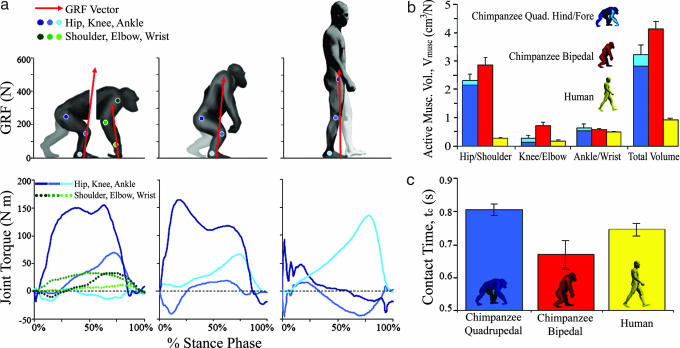Fig. 2.
Comparison of walking mechanics in chimpanzees and humans. (a) GRF vectors and joint torque for humans and chimpanzees. Figures show joint positions at 50% stance (forelimb and hindlimb shown separately for quadrupedal chimpanzees). Positive torque values indicate flexion, whereas negative values indicate extension. Note the large hip flexion moments in chimpanzees relative to humans. Horizontal dashed lines indicate zero joint torque. (b) Vmusc per newton of bodyweight (cm3/N) at each joint and in the whole limb for chimpanzee hindlimbs (dark blue) and forelimbs (light blue) during quadrupedal walking, chimpanzee hindlimbs during bipedalism (red), and human hindlimbs (yellow). (c) Mean tc (in seconds) during walking in chimpanzees and humans. Note that Froude numbers are similar for all groups (Fr = 0.2; Table 1), but absolute speeds are slightly higher for humans (Table 1).

